[blog_cta type="guide" text="Order My 2018 Santa Fe Travel Guide" date=}”A_Feast_For_All_Seasons”]
New Mexico’s foundational Pueblo culture is ever-present in Santa Fe and is reflected in the art, design and architecture throughout the city. However, an in-person visit to one of the Indian Pueblos in the region can also be a deeply enriching experience, especially on the occasion of an [blog_link url="https://www.santafe.org/images/Embed/5093-2018%2520Schedule%2520of%2520Pueblo%2520Feast%2520Days%2520and%2520Tribal%2520Celebrations.pdf" text="annual Pueblo Feast Day" date="2017-01-23"], where the culture is celebrated and the public is welcome to attend.
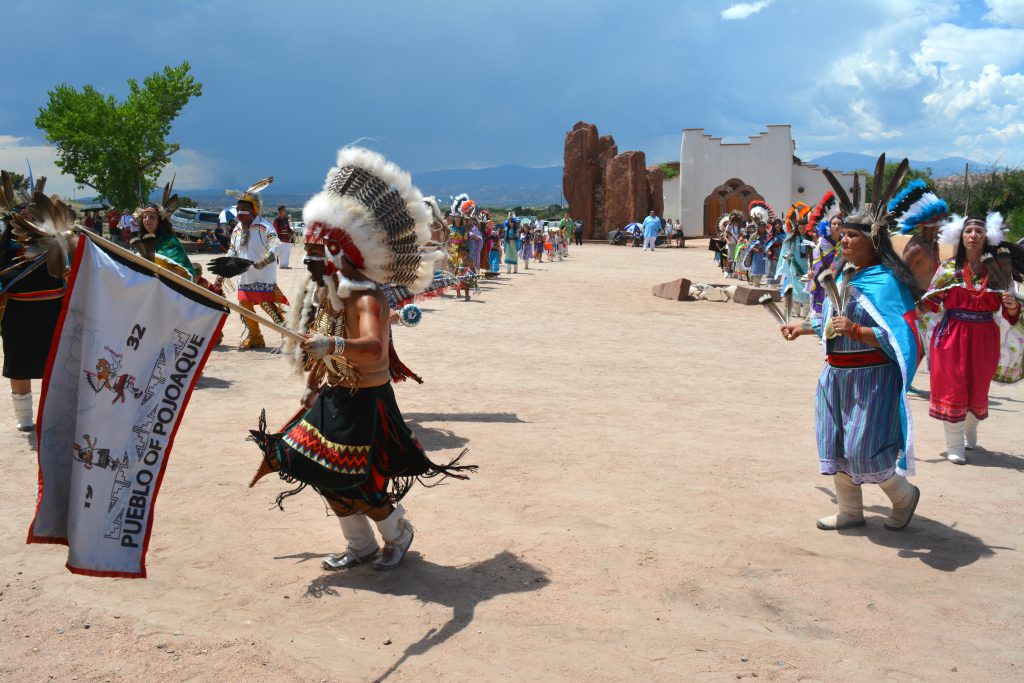 Pueblo of Pojoaque Comanche Dancers
Pueblo of Pojoaque Comanche Dancers Throughout the calendar year, eighteen Pueblos in New Mexico celebrate annual Feast Days to honor and preserve their cultural traditions and their respective Catholic Patron Saint, a reflection of the integration of the Spanish influence that originated centuries ago. Each Pueblo village has its own church and Feast Days begin with a mass. The time of year the annual feast day occurs determines what type of dances are held. For community members, this is one of the most important days of the year, and dancers of all ages take part. Regardless of the type of dance, elaborate and beautiful regalia are worn, along with the finest of Native American hand-made jewelry, embroidered clothing, furs, and moccasins.
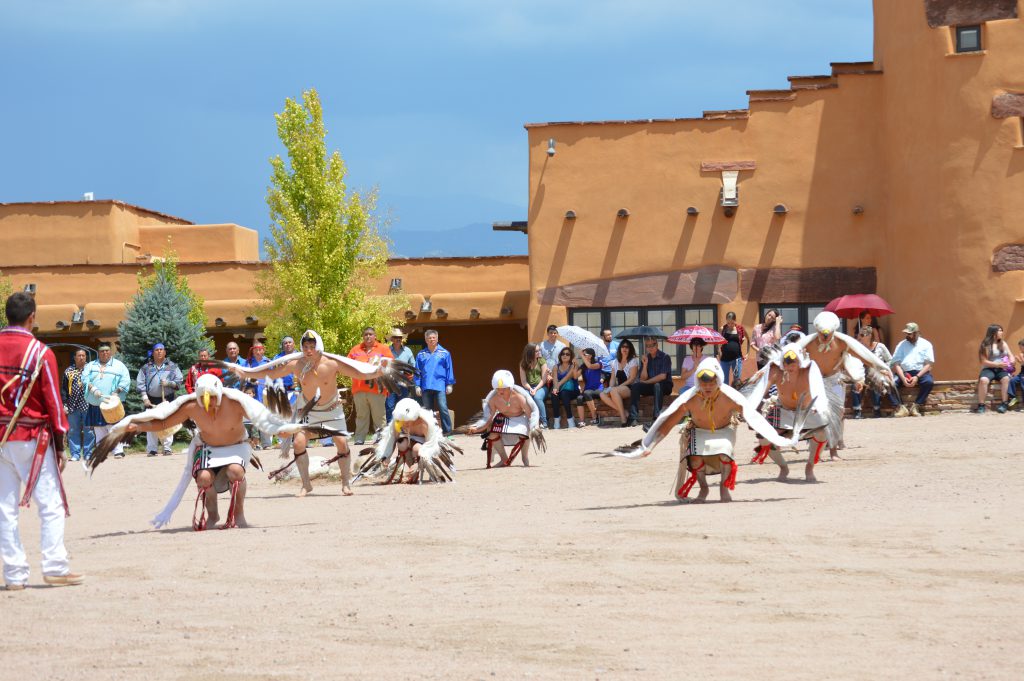
Pueblo of Pojoaque Eagle Dancers
Some dances express reverence for sacred beings, such as the Buffalo, Deer, Elk, Butterfly, and Eagle. Others, such as the Corn Dance, honor the seasonal planting and growing cycles, and encompass prayer for a plentiful rain and a bountiful harvest.
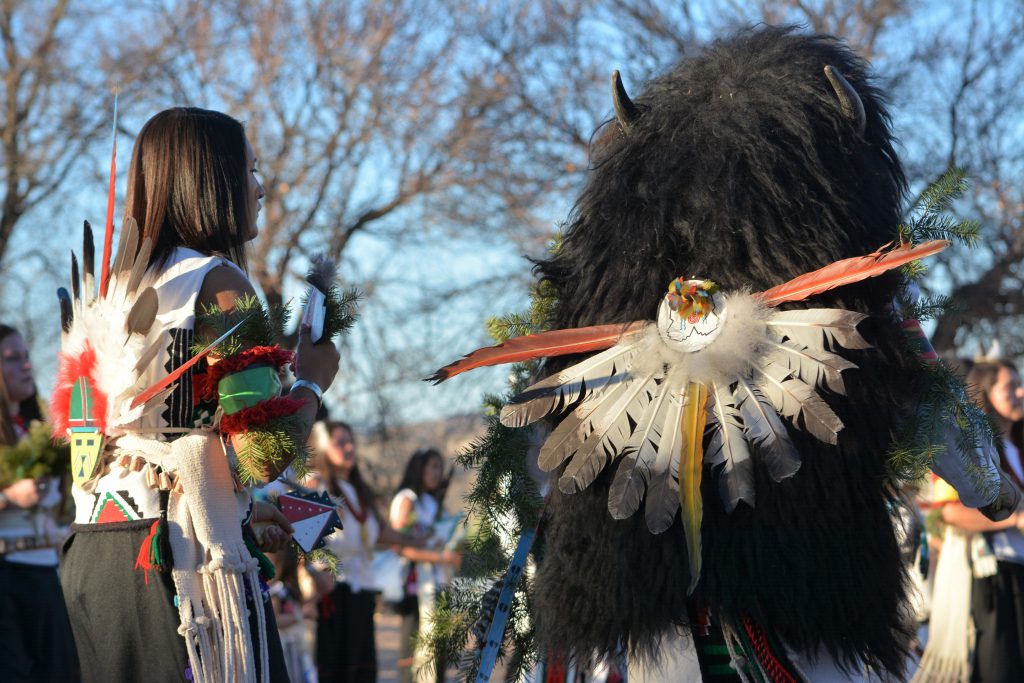
Pueblo of Pojoaque Buffalo Dancers
Along with the dancers, there are the male Pueblo drummers, singers, and tribal officials who lead the Feast Day activities. Their songs express gratitude for the well-being of the community, and are also a way that time-honored traditions, language and stories are passed on from the elders to the younger generations. While many Pueblo members live very contemporary lives, they take great pride in their resilience, history and the survival and continuation of their culture and traditions. The sound of the drum beat is representative of heart beat, and the community comes together with open hearts and homes to share in the feast.
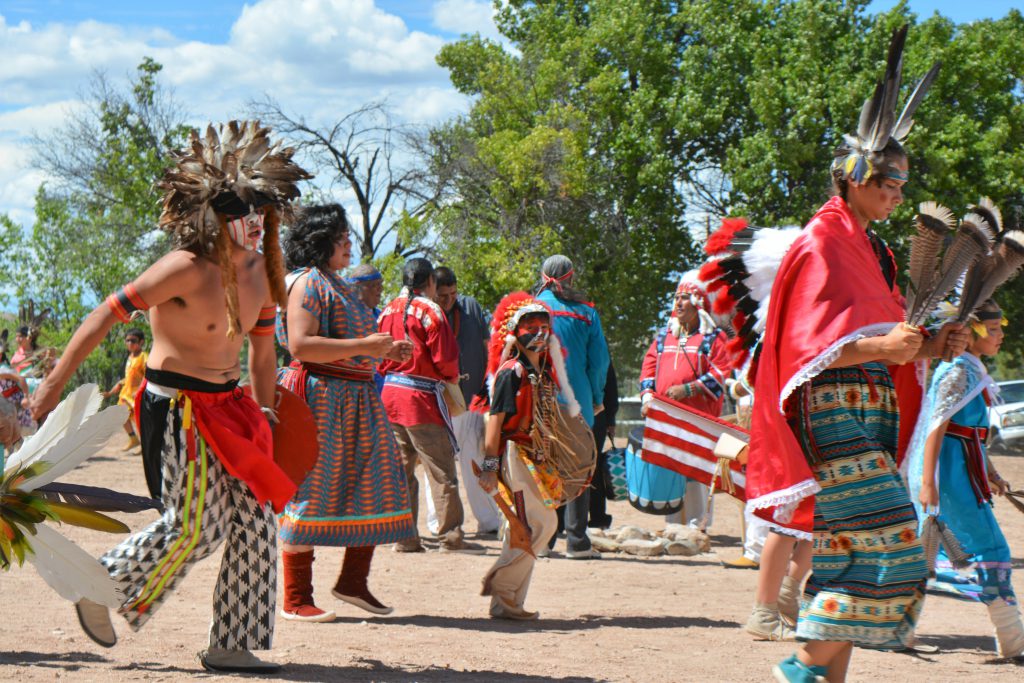
Pueblo of Pojoaque Comanche Dancers
A large part of the feast involves enjoyment of traditional food dishes. Pueblo families spend days and weeks ahead preparing a variety of traditional stews, sure to warm the heart and soul of Pueblo members and their guests. Breads and pies are baked in the outdoor horno ovens, so that they might appear on the feast tables — fresh, irresistible, and in abundance. Pueblo hospitality is never in short supply, and if you don’t already have an invitation to a home, it is possible you will be invited to eat while there. Sharing of the beautiful culture and delicious foods is a hallmark of a feast day, as is the generous Pueblo spirit, and visitors are encouraged to “eat good.”
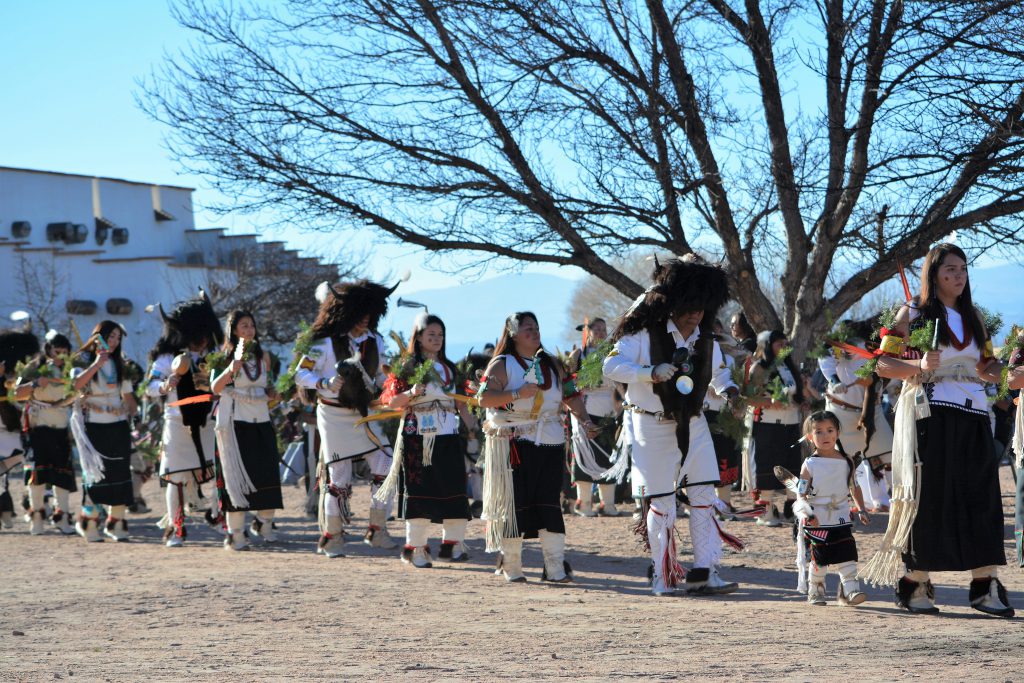
Pueblo of Pojoaque Buffalo Dancers
Many feast days also include arts and crafts fairs, where you can buy authentic Native American products direct from local artists at very reasonable prices. Some Pueblos have cultural centers and galleries that have their doors open on feast days as well. Some of the larger summer feast days even offer a carnival with rides and food vendors going on simultaneously with the traditional activities. It is appropriate to ask tribal officials for information, but it is not polite to talk to dancers.
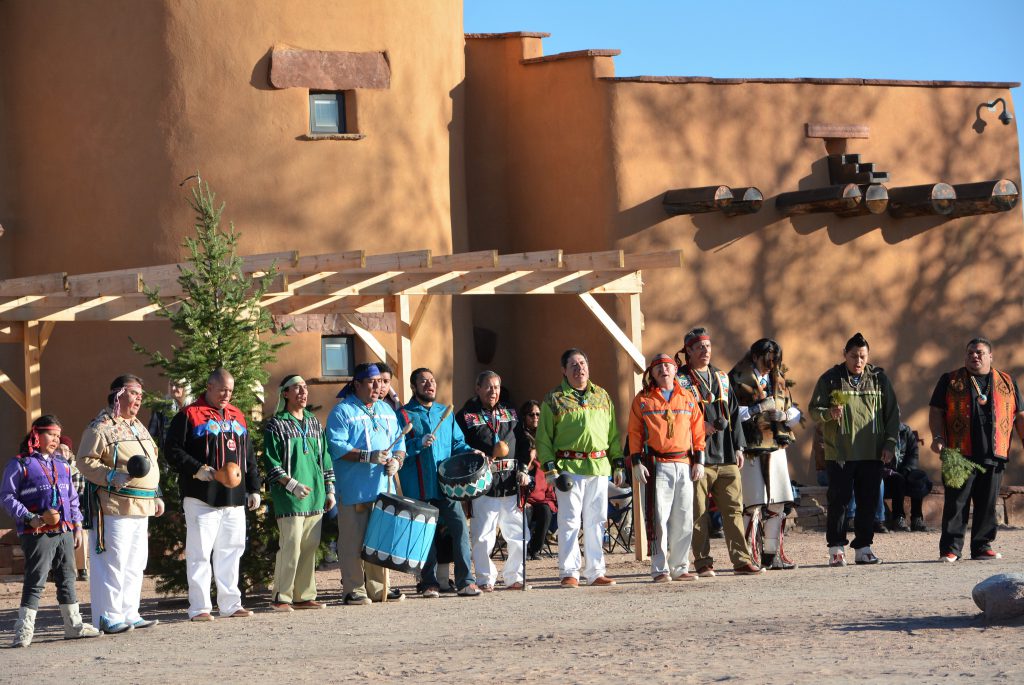
Pueblo of Pojoaque Drummers
The sights and sounds of a Pueblo feast day can be intoxicatingly beautiful, and will stay with you long after you return home. However, generally photography is not permitted. Since the dances are part of ceremony that happens to be open to the public on these special days, it is important to observe the tribal protocols. Religious activities that include the dances do not occur on a specific schedule and are not a performance, but instead a sacred community celebration to respectfully immerse oneself in. The essence of the Native American culture is to uphold and protect the natural world, and these traditions are the cornerstone of Pueblo life.
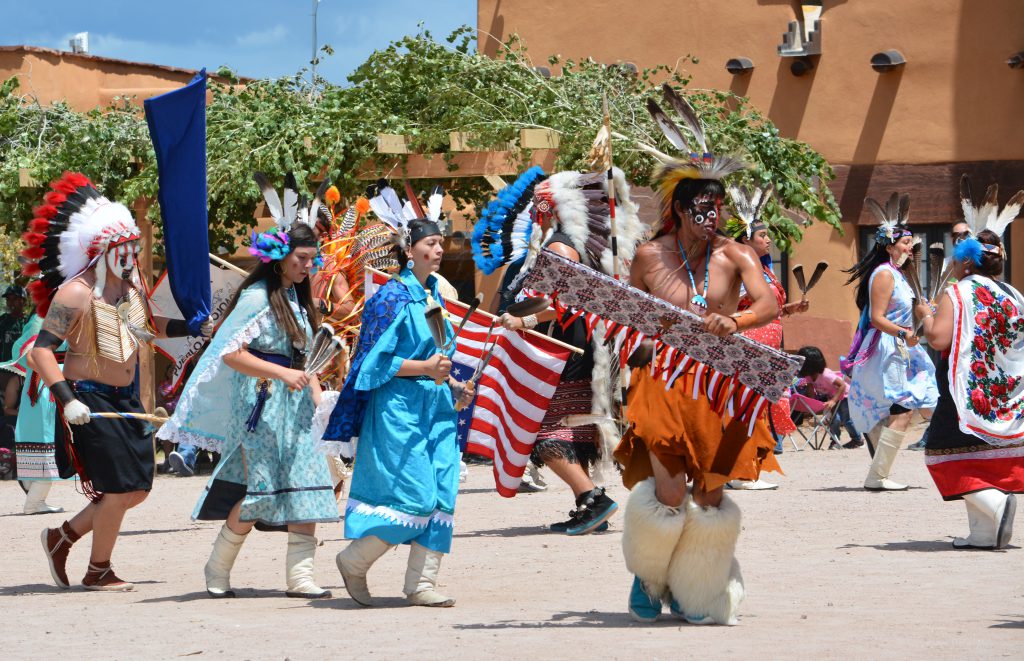
Pueblo of Pojoaque Comanche Dancers
From brightly-colored traditional dress to glistening jewelry, featuring plentiful turquoise and coral (symbolizing sky and earth), the sound of bells and shells worn by the dancers, and the smell of burning wood and sage, visitors will take home sweet memories of a place and people like no other. As you wander through the Pueblo center plaza you will notice the origin of Pueblo-influenced architecture, with warm adobe red homes set against the backdrop of clouds and blue sky, a mainstay of New Mexico’s iconic imagery. Leave your umbrella at home because, if it rains or snows, it is considered a blessing and a gift!
Click here for a complete schedule of Pueblo Feast Days and other Tribal Celebrations. Then, start planning your trip to Santa Fe by ordering the [blog_link url="https://santafe.org/" text="2018 Santa Fe Travel Guide" date="2017-01-23”].
This blog was written in partnership with [blog_link url="https://santafe.org/" text="TOURISM Santa Fe" date="2017-01-23”] and Rima Krisst, Tourism Santa Fe Tribal Liaison. Special thanks to Pueblo of Pojoaque for permission to share select photos by Rima Krisst from their summer and winter feast days that occur July 28 and December 12 annually. Visit: www.pojoaque.org









